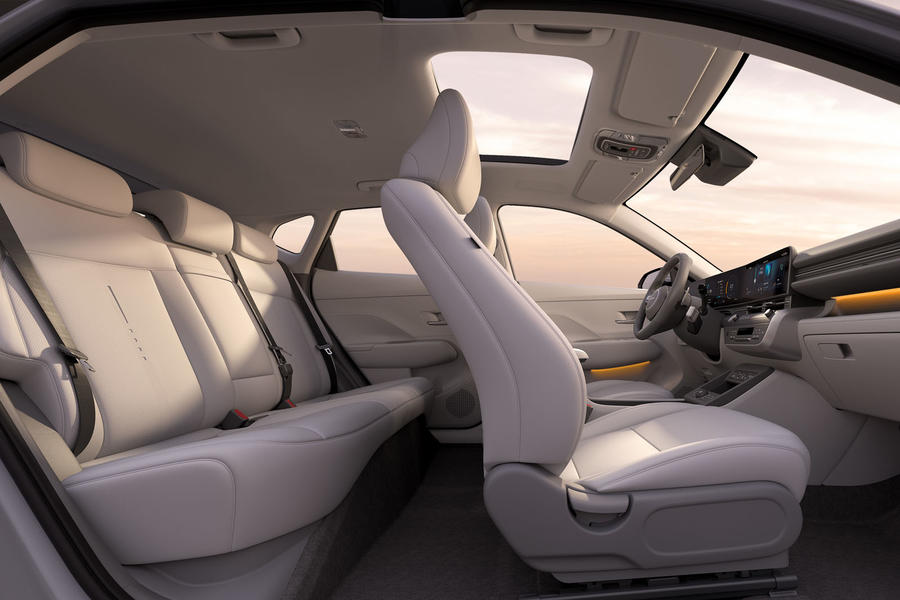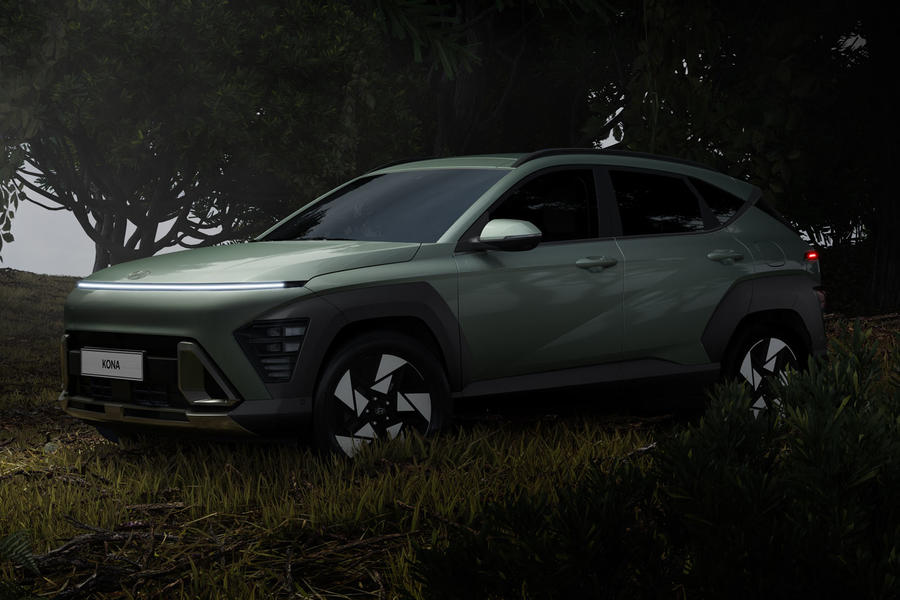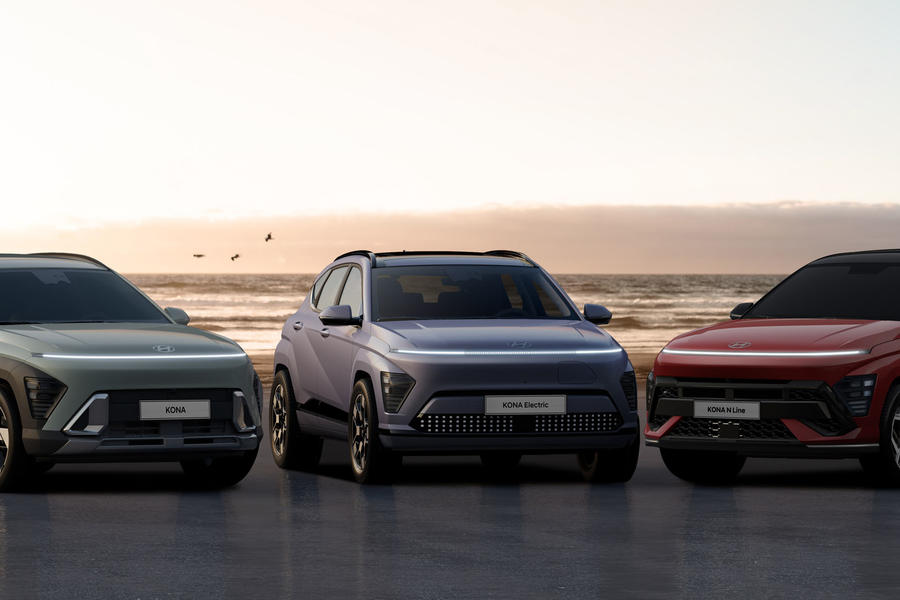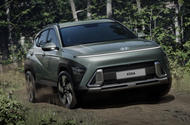The new Kona will arrive in the middle of 2023
Crossover is bulked up with more interior space and a design influenced by last year’s bold Hyundai Seven concept
The Hyundai Kona has been radically redesigned and extended in all dimensions to cement its foothold in the fiercely fought crossover market.
Early design images reveal that the new Kona, due to arrive in mid-2023, takes influence from last year’s bold Hyundai Seven concept, with a slim wrap-around front light bar, clamshell bonnet and chunky off-road-influenced design cues.
It’s 150mm longer than the current Kona (at 4355mm), it’s 25mm wider and it sits on a 60mm longer wheelbase. These increases, Hyundai says, provide “maximised living space” in the revamped cabin, which hosts a similar wrap-around digital driver display – in the form of dual 12.3in displays – to the Ioniq 5’s. These screens have been coupled with physical buttons for the climate control and heated seats located on a floating module just underneath.
Extra space has also been created for passengers, as well as baggage, both in the front and rear of the car. Some of this can be found in the centre console, where additional storage has been freed up after designers moved the gear shifter to the steering column.
The car has also been designed to “maximise” boot space, which will be larger than the current Kona’s 374-litre capacity.

SangYup Lee, Hyundai’s executive vice-president and head of design, said the new Kona has been created to express a “bold and dynamic presence” on the road, adding: “[The] Kona has evolved in every respect to embrace an even wider range of diversity, to become a true lifestyle-supporter.”
The new Kona will sit on the same Hyundai-made K3 platform as sister brand Kia’s new Niro. This means that a similar array of powertrain options are expected to be available on the Kona, bringing petrol, hybrid and electric options to the UK.
A sporty N-Line model is due, too, although there’s no word on a new full-bore Kona N hot variant.
While the new Kona comes with radical and futuristic design changes over the current model, changes underneath are expected to be subtler.

This is likely to mean the Kona EV will be launched with the same powertrain that the current car and the Niro EV offer: a 64.8kWh battery – good for 285 miles of range and a 10-80% DC charge time of 43 minute – and a motor making 201bhp and 188lb ft of torque. With this, expect the Kona to offer a 0-62mph time close to that of the Niro EV’s 7.8sec.
A hybrid version is expected to continue to use the same 1.6-litre petrol engine and 43bhp electric motor, which gives a total output of 139bhp and 199lb ft of torque. The small 118bhp 1.0-litre petrol engine used on the ICE Kona is also expected to be carried over.
A plug-in hybrid option could also be introduced to the Kona, given that this is offered on the Niro. The Niro PHEV uses the same 1.6-litre petrol engine paired with a larger electric motor, raising output to 180bhp. Electric-only range is set at around 40 miles.

Depending on the powertrain selected, the design will also be tweaked. The EV gets exterior pixel graphic details, while the hybrid and ICE models are fitted with skidplates front and rear. The N-Line adds a “wing-type spoiler”.
Pricing will be revealed early next year, but will likely increase on the current Kona’s £23,625 starting price and push the EV – which currently starts at £32,450 – above the £35,000 mark.
Source: Autocar
